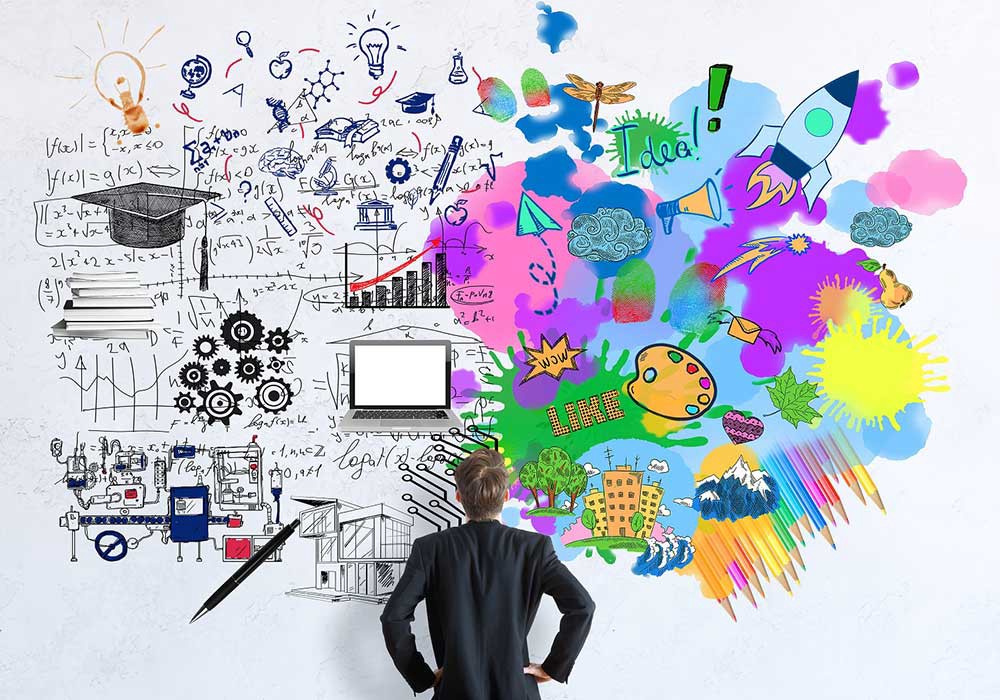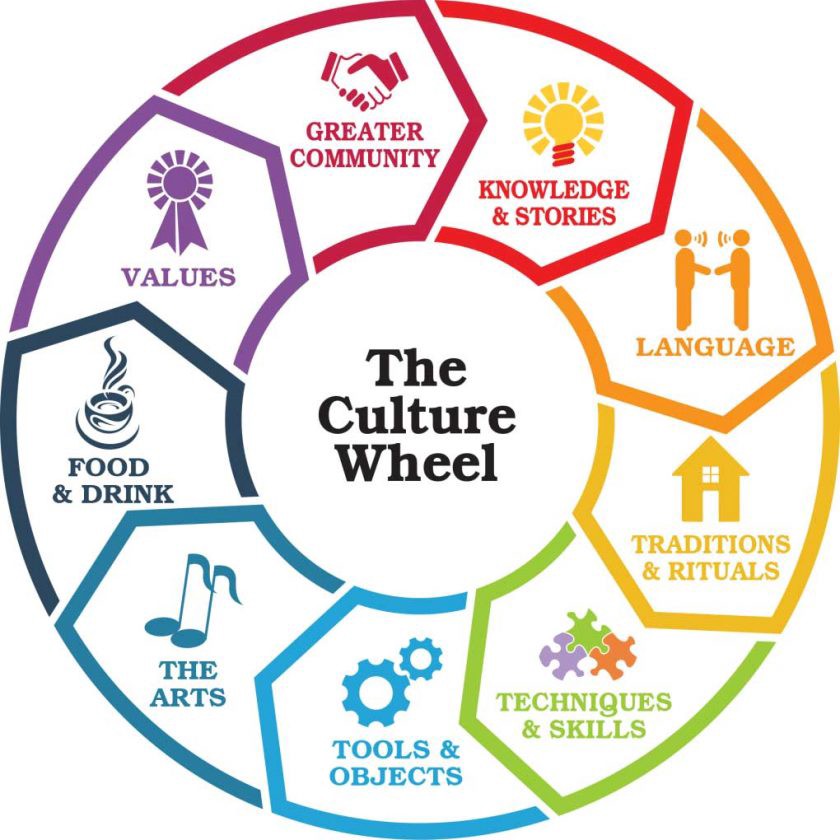
Culture is a word for the way of life of groups of people, the behavior, beliefs, values, and symbols that they accept, generally without thinking about them, and that passed along by communication and imitation from one generation to the next generation. There is different Types of Culture.
Culture is the feature and knowledge of a particular group of people, bounding language, religion, cuisine, social habits, music and arts. Culture is an integrated set of pattern of human activities, knowledge and belief within a community or social group and the symbolic structures. Culture is purity Of savor in the fine arts and humanities.
Culture is circle of religion, food, what we wear, how we wear it, our language, marriage, music, what we believe is right or wrong, how we sit at the table, how we meet visitors, how we behave with some ones, and million other things. The outlook, attitudes, values, morals, goals, and customs shared by a society all are include in culture. Culture is a complex concept which impacts virtually every aspects of our lives both consciously and subconsciously.
Culture is the expression of own nature in our way of life and thinking in our everyday dealings in art, literature, religion, reaction and enjoyments as member of society. Culture is a system of values and beliefs which we share with others, all of which gives us a sense of belongings or identity.

Types of Culture
Studying culture to understand patterns of human behaviour is a big job. While there are unlimited ways that people can express their culture, social scientists have developed two basic categories to define things produced by a society. First is Material Culture and second is Nonmaterial Culture.
Material Culture
Material culture mentions to the physical objects, resources, and spaces that people use to define their culture. These include homes, schools, churches, mosques, offices, temples, factories and plants, clothes, utensils, roads, ornaments, T.V, radio, machines, tools, goods and products, stores and many more. All of these man-made objects and things that have been evolved over ages for man?s well-being and comfort are material culture.
Now material culture does not mean that it is an object that is bought and sold; it can also be something we all make. For example, cocking art is a common thing we all do, and therefore is a part of our material culture.
Non material Culture
The other type of culture is non material culture which cannot be touch, feel, taste or hold. Non material culture belongs to the nonphysical ideas that people have about their culture, including beliefs, values, rules, norms, morals, languages, social roles, ethics, music, literature, customs, traditions, organizations and institutions. Non material culture is just as big of impact on our lives as material culture.
Elements of Culture
The culture of any specific society consists of several elements, or parts. Followings are some elements of culture.
Social Organization
In most cultures, society divides people by social organization. Mostly there is a ruler who is more powerful than other persons. Social organization is an important element of culture that shows how the society treats the relationships between different members of that culture.
Customs
Customs are traditions, values, and social standards of a society and establish practices. These help a society indicate the rules of behaviour which enforce ideas of right and wrong. These can be traditions, rules, written laws, etc.
Rituals
Rituals are processes or set s of actions that are repeated in specific conditions and with specific meaning. They may be used in such as when someone is promoted or retires. They may be associated with company events or special day.
Religion
Religion is another important element of culture, which describes a society?s morals and beliefs about humanity?s spirituality and reason for existing.
Language
Language is a symbolic system through which people communicate and through which culture is written, acted and transmitted. Language is always evolving as societies create new ideas. Rules of speaking and writing vary in every language even within cultures.
Norms
There are different norms, standards and expectations in cultures for behaving. Norms are divided into two types.
Formal norms also called mores and laws considered most important in any society. Informal norms also called folkways and customs, considered less important. Symbols
Some symbols are type of nonverbal communication, while others are material objects. Every culture has many symbols, of things that stand for somethings or show reactions and emotions.
The world is filled with symbols, like sports uniform, school uniform, company logo, gold ring and traffic signs are symbols.
Characteristics of Culture
Culture has its own characteristics, here are some discussed.
Learnt
Culture is learnt from their elders because it?s not biological. Culture is not the thing you study or inherit but it is just the process you pass from it. Instead, you learn culture subconsciously without paying any attention. Children learn culture by watching their parents and family. They copy behaviours and adopt different roles and values. We learn our culture not only from our parents but also from families, institutions, media and other people.
Shared
Culture is something that is shared because we share our culture with other members of our group. Culture is always transferred by sharing. Culture is shared in many ways like social communication, group discussions, public speaking, TV, internet. Although culture is share but it doesn?t mean culture is homogeneous.
Social
Culture is social, it is not the one person phenomena. It is the product of society and raise and grows through social interaction. Culture can be thoughts of social influence and it must be social without it there is no concept of culture.
Continuous
Culture is a continuous process and adapts changes in the environment. Culture is growing whole with the achievements of the past and present and provide the future achievements of mankind. Culture is the result of past and present experiences.
Integrated
Culture is also integrated because its various parts are interconnected. All components of culture are connected to one another and to gain a extensive Understanding of culture, we must learn about all these different components.
Effects of Geography on Culture
One of the most intense factor that affects culture is geography. The development of a culture is mainly depends on its geographical location. Geography affects culture by number of languages spoken in a given area, clothes people wear, their political ideas, and their religious values.
For example, location that is ideal for hunting, affects that culture by encouraging people to teach their posterity to hunt, tell hunting stories or celebrate hunting skills.
Another good example is Japanese culture which relies on water because Japan is surrounded by water. Water has a strong influence on their art and culture such as haiku poems and bonsai trees.
Effects of Culture on Society
Since the beginning of the civilization culture has strong effects on the society. Scientists, various experts and specialists want to answer how exactly one culture can affect our modern society. Culture is a part of our lives and defines the nation as it is.
Culture is actually a group of people that belongs to a particular society. The combination of one culture and society makes one country and nation that live in that country. Culture is the identity of the nation which makes it unique. Culture is the basic root of any community, which teaches us to think for the whole nation not individually. Culture gives the concept of family and nation.
Culture and Business
Culture has very strong effects on modern business. For example, during a business meeting where people from different cultures are communicating with one another, cultural differences have to be taken into account. Cultural differences frequently impact the success or failure of multicultural business debates. In the world we live around, socialize and work with people from different cultural backgrounds and different parts of the world. Business owners must keep in mind these differences throughout the product?s life cycle, from its design to marketing and beyond.


